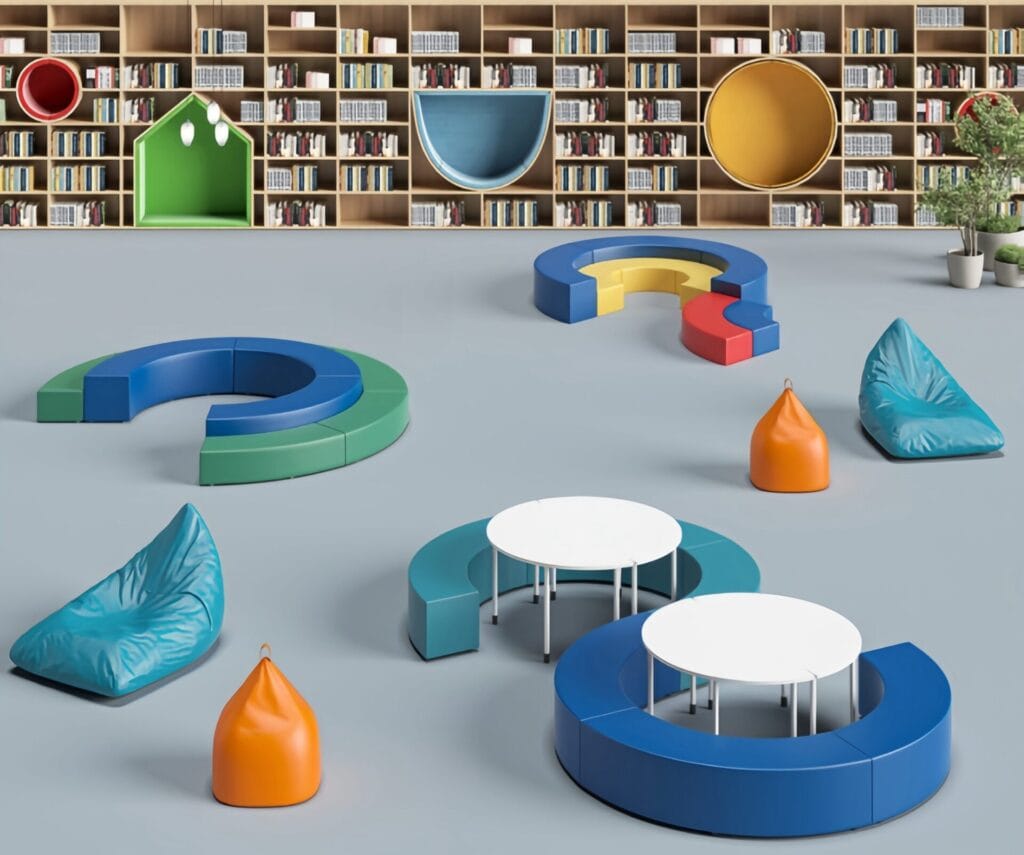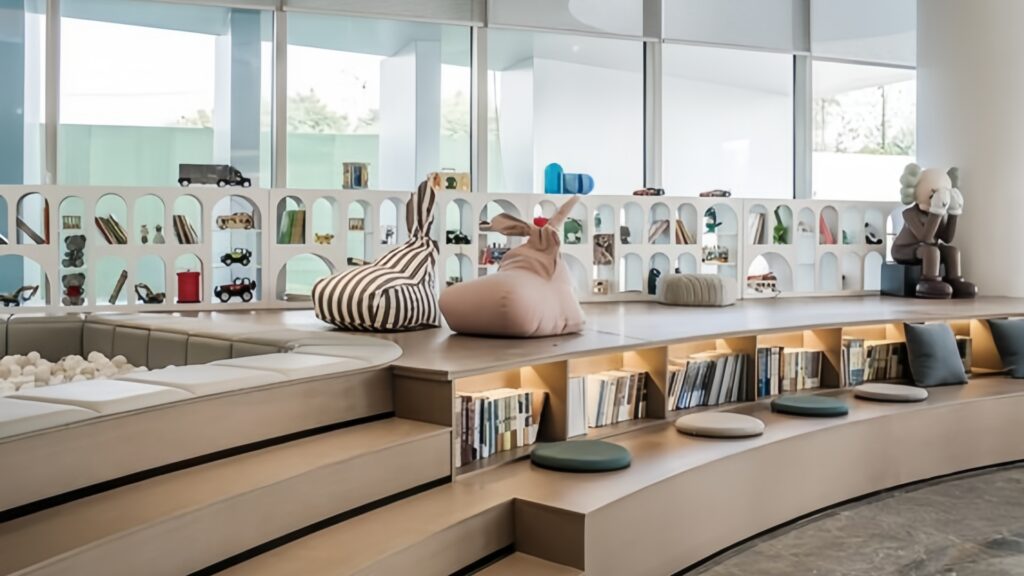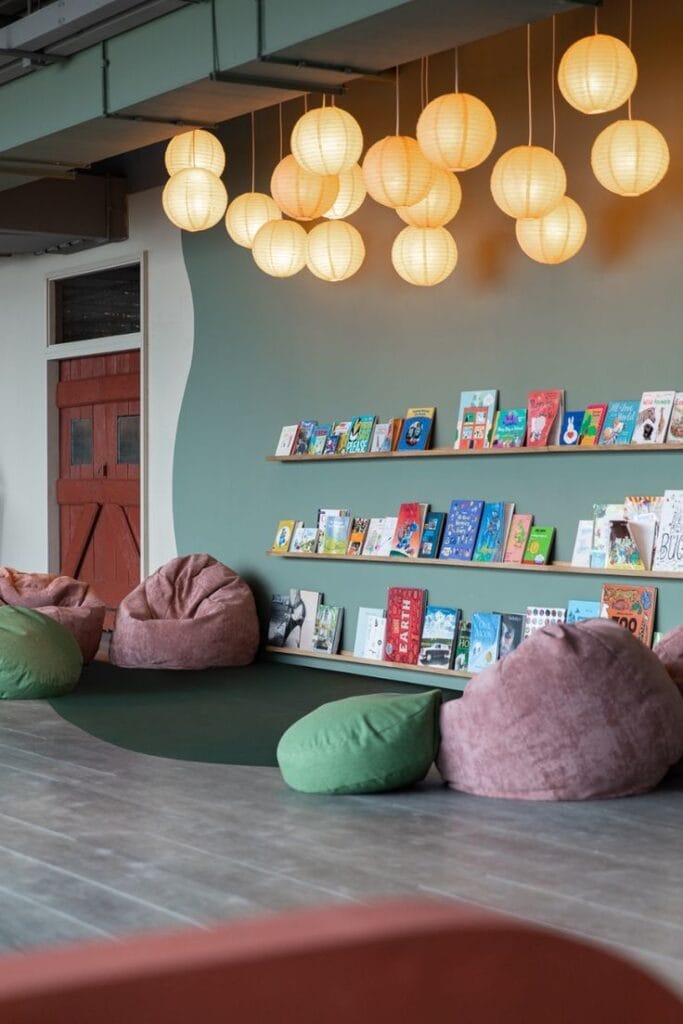In the ever-evolving world of education, fostering a love for reading and learning is paramount. One of the most effective ways to achieve this is by creating vibrant, engaging, and functional reading spaces within school libraries. The design of educational furniture plays a crucial role in enhancing students’ experiences, promoting literacy, and cultivating a lifelong passion for reading. This article delves into the key elements of a thoughtfully designed reading area and how educational furniture can transform school libraries into inviting havens of learning.

The Importance of Reading Spaces in Education
School libraries are more than just repositories of books; they are dynamic environments that inspire curiosity, imagination, and intellectual growth. A well-designed reading area can significantly impact students’ attitudes toward learning, providing them with a comfortable and stimulating space to explore new ideas. By incorporating creative and versatile furniture, educators can create environments that encourage collaboration, focus, and relaxation.
Key Elements of Educational Furniture Design for Reading Areas
- Innovative Bookcase Designs
A cornerstone of any reading area is the bookcase. Traditional shelves, while functional, can sometimes feel uninspiring to young students. The integration of playful and imaginative bookcase designs, such as house-shaped shelves or circular cutouts, can transform the library into a wonderland of discovery. These unique designs capture the interest of children and draw them toward books, fostering an early love for reading.
- House-Shaped Bookcases: Mimicking the shape of a house, these bookcases create a cozy, familiar environment that resonates with young readers.
- Circular Shelves: Offering a visually striking design, circular shelves add an element of fun and creativity to the space, making books more accessible and appealing.
- Colorful and Varied Seating Options
Comfortable seating is essential for creating an inviting reading area. The inclusion of diverse seating options ensures that students of all preferences can find a spot that suits their needs.
- Circular and semi-circular benches: Available in vibrant hues of blue, green, and red, these benches encourage group discussions and collaborative reading sessions, fostering a sense of community.
- Bean Bag Chairs: Offering a relaxed and informal seating option, bean bag chairs in bold colors like blue and orange provide a laid-back environment that appeals to students seeking a more casual reading experience.
- Pear-Shaped Chairs: Whimsical and unique, pear-shaped chairs add a playful touch to the library, enhancing the overall aesthetic appeal and stimulating children’s imaginations.
- Interactive and Functional Tables
Tables play a dual role in reading areas by serving as surfaces for reading materials and collaborative activities. Modern, round tables in colors like white and blue blend functionality with style, creating versatile workspaces that cater to both individual and group activities.
- Collaborative Workspaces: Round tables facilitate group projects and discussions, promoting teamwork and interaction among students.
- Solo Reading Spots: Individual tables provide quieter areas for focused reading and independent study.
- Flexible Layout and Arrangement
A key aspect of modern library design is flexibility. Furniture that can be rearranged easily allows educators to adapt the space to different activities and group sizes.
- Modular Seating: Pieces that can be moved and reconfigured empower students to create their ideal reading environment.
- Open Layouts: Ensuring that pathways are clear and seating is arranged to allow free movement contributes to a welcoming and accessible atmosphere.

- Safety and Comfort
Children’s safety is paramount when designing educational spaces. The furniture in reading areas is crafted with soft, rounded edges to prevent injuries and create a safe environment.
- Soft Edges: Rounded corners on tables, chairs, and shelves minimize the risk of accidents.
- Ergonomic Design: Chairs and benches are designed to provide adequate back support, ensuring that students can read comfortably for extended periods.
- Aesthetic Appeal and Stimulation
Bright, vibrant colors and modern designs transform school libraries into stimulating environments that capture students’ attention and spark their creativity.
- Color Psychology: The use of warm and inviting colors like red, blue, green, and orange enhances mood and encourages engagement.
- Visual Interest: Unique furniture shapes and bold color schemes create an environment that students look forward to visiting.
- Accessibility and Inclusivity
Ensuring that the reading area is accessible to all students is a cornerstone of inclusive design. Furniture is chosen with accessibility in mind, allowing children of all heights and abilities to interact with the space independently.
- Height-Appropriate Furniture: Bookshelves and tables are positioned at heights suitable for young readers, promoting independence.
- ADA Compliance: Ensuring pathways are wide and seating arrangements accommodate students with disabilities fosters an inclusive environment.
- Encouraging a Love for Reading
The ultimate goal of designing a reading area is to cultivate a love for reading and learning. By creating a space that is both functional and visually appealing, educators can inspire students to develop positive reading habits that extend beyond the classroom.
- Thematic Zones: Dividing the library into themed sections, such as fantasy corners or science nooks, can spark interest in different subjects.
- Interactive Displays: Showcasing books with interactive elements or digital screens can engage tech-savvy students and integrate modern learning tools.
The Long-Term Impact of Thoughtful Library Design
Investing in high-quality, well-designed educational furniture has long-term benefits for both students and educational institutions. A thoughtfully curated reading area can:
- Improve literacy rates by creating environments that encourage reading.
- Enhance students’ overall well-being by providing comfortable, engaging spaces.
- Foster collaboration, creativity, and critical thinking skills.

Conclusion
The design of educational furniture for reading areas in school libraries is a vital component of fostering a love for reading and creating positive learning environments. By incorporating innovative bookcase designs, colorful seating options, and interactive tables and ensuring safety and accessibility, educators can craft spaces that inspire and engage students.
As schools continue to evolve, investing in dynamic, flexible, and aesthetically pleasing reading areas will play a critical role in shaping the educational experiences of future generations. Through thoughtful design, school libraries can transform into vibrant hubs of knowledge, creativity, and inspiration.


